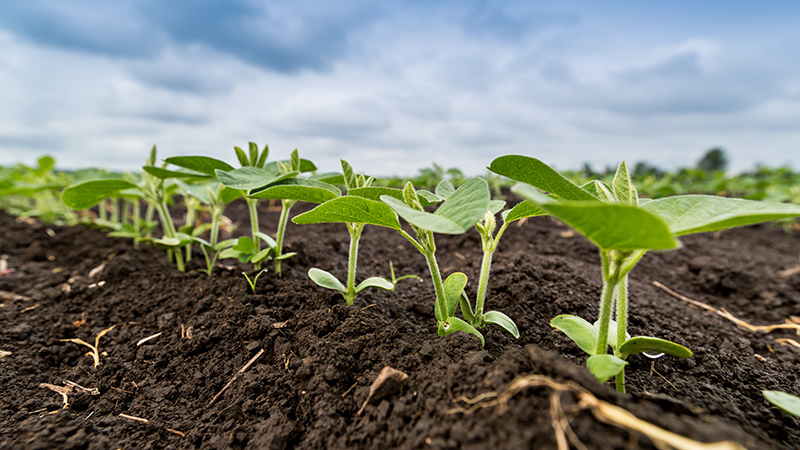A Paradigm Shift: What to Watch for in Earlier Planted Soybeans
The stake in the ground for when to plant soybeans keeps getting moved up earlier and earlier in the spring. It’s a shift that’s become more prevalent in the last five years.
Primarily, growers are planting their soybeans before or at the same time as their early corn crop. In 2021 alone, many acres of soybeans were planted in the first two weeks of April or, depending on geography, the last two weeks of March. We used to be lucky if soybeans were in the ground sometime between May 1 and May 15, but that’s changed.
Making Heads or Tails of This Decision
The reasoning for why this planting shift has occurred is multifaceted.
For many, it’s yield related. We want to get soybeans flowering as close to the summer solstice as possible. Having that full flower during the longest days of the year helps the plants capture the maximum amount of sunlight and convert that energy into more bushels at the end of the year.
Another reason is the option to market early-delivered soybeans for a premium. With demand for soybeans continuing to remain high and inventories low, this gives growers a chance to create a marketing advantage and capture a higher per bushel price.
From an operational standpoint, bumping up soybean planting can alleviate some of the concerns typically associated with corn planting in the spring. By switching up the planting priorities (i.e., soybeans first, corn second), it allows growers to plant into and during more favorable soil and environmental conditions for that corn plant to develop, while allowing them to still plant those 110- or 115-day hybrids they like so much.
This approach also jump-starts planting, keeps the planter moving, and minimizes the waiting period for the right time to plant corn. And, from a crop physiology perspective, soybeans, simply put, can take more punishment and have a higher tolerance for less than favorable environmental conditions compared to a corn plant. It’s a real win-win for growers.
The Effects on Weed Management Programs
By switching up the planting dates of soybeans, growers need to be open minded to the idea of altering their weed control programs. They should now include a fall burndown with a residual and think differently about postemergence application timing to ensure they have the right product on-hand at the right time, given what overlapping residual herbicide timing could be.
In this equation shift, one of the biggest changes is the use of a fall burndown. What this does is:
- Helps dry out and warm up the soil faster in the spring.
- Allows growers to start and stay clean in the spring since the opportunities to make a preemergent herbicide application are lowered as the planting date is bumped up.
From the postemergent side of things, the options stay the same. What is affected is the timing of that post application, which, in some situations, could be 30 days earlier than it typically is. And even though soybeans are being planted earlier, it doesn’t mean those germinating weeds are going to outrace the crop canopy. Soybeans planted on April 1 don’t grow at the same rate as those planted on May 1. Having a plan based in overlapping residual herbicides is still the key to managing Palmer amaranth and waterhemp species.
Weighing the Risk
There’s a lot of upside to planting soybeans early, but I’d be remiss if I didn’t touch on the downsides, which are similar to its benefits. Planting soybeans in an environment when the conditions are not at their best does increase the chances for a replant, but soybeans have demonstrated year over year they can compensate for some level of stand loss.
Another potential negative is time management in the fall, particularly for those growers who planted both corn and soybeans. It’s very likely those who plant soybeans first will end up in a situation where both crops are ready to be harvested at the same time. This creates a tug of war for what comes out of the field first.
As with anything in farming, there’s opportunity in risk, and we have to determine how much we’re willing to take on. But we can offset and mitigate our risk level by planning carefully to understand what’s possible and taking the right steps in the fall and spring to set that soybean crop up for success early in the growing season. If a grower is looking to break some soybean yield barriers or personal records, going early might just be the step they need.






